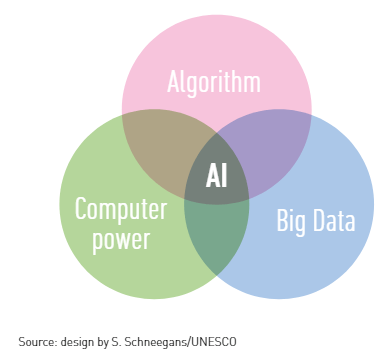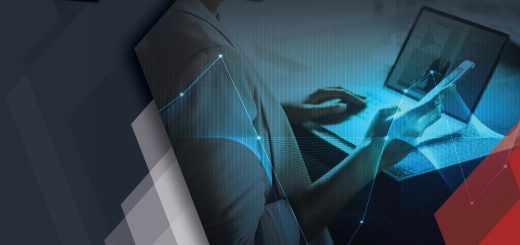AI Innovations and Sustainable Development: For a Greener Tomorrow
Sustainable development is the need of the hour. It is defined as development that meets the present generation’s needs without jeopardizing the ability of the future generation to meet theirs. Artificial intelligence, otherwise known as AI, will play a crucial role in designing, executing, advising, and planning for a sustainable future. Moreover, the combination of AI and sustainable development can help tackle issues like climate change, food crisis, and more. Companies from all over the world are adopting cutting-edge AI innovations to ensure a better and more sustainable future for everyone. Moreover, the application of this state-of-the-art technology is not limited to any particular sector or industry.
This article will highlight the growing role of artificial intelligence in sustainable development, how it is already changing various industries, and numerous new-age companies leveraging this technology for a better future.
Table of Contents
What is Artificial Intelligence?
AI is an interdisciplinary science with myriad approaches to tackle day-to-day problems by replicating or simulating human intelligence in machines. It is being revolutionized by deep learning algorithms, and neural networks, a subset of machine learning (ML). Machine learning and profound learning advancements have generated tremors of development in practically every digital field and have become an integral part of our daily lives.
Progress in AI was initially slow after its introduction in 1856. However, in recent years, applications of AI have quickly moved from the theoretical realm to the global marketplace. This swift growth of AI is fueled by a profusion of digitized data or big data and advancements in computation resources or computer power. Consequently, patenting of AI-related applications has also grown exponentially. According to WIPO Technology Trends 2019 report, AI-related applications grew at an average of 28% per year from 2013 to 2016. As per a report published by Statista, around 1,400 AI patents were filed in India in 2020 – a considerable increase in comparison to the number of patents filed in the same field a decade ago. The WIPO report also highlights that about 40% of the AI-related patents talk about machine learning, making it the dominant AI technique.
AI Innovations are driven by the revolutionary effect of AI in detecting patterns among billions of seemingly unrelated data points. It is safe to say that AI offers opportunities to unlock the value of data to enable more evidence-based and informed decision-making, measure progress towards sustainable development goals (SDGs), and drive development transformations.

In the next section, we shall discuss the practical ways AI can help meet sustainable development goals.
Role of AI in Sustainable Development
AI has a vast potential to change our lives, and this technology finds application in sustainable development as well. Entrepreneurs, non-profit organizations, and governments are already leveraging it to bring about a positive change in society. In addition, AI can also help control environmental changes and impacts in a variety of economic domains and situations. Here are some critical ways AI can or already are helping our planet move towards sustainable development.
- Social Impact: A recent study published in Nature found that AI-based solutions can improve about 82% of the sustainable development outcome criteria, such as poverty, quality education, access to clean water and sanitation, and cheap and clean energy.
- Lower Carbon Footprint: AI can help cities lessen their reliance on fossil fuels by reducing the emission of harmful gases.
- Reduce Poverty: Some international organizations can better spot extreme poverty across growing cities and rural areas, thanks to pattern recognition algorithms from satellite photos.
- Fraud Prevention: Given the complexity and volume of financial data available today, fraud is a significant problem, and human fraud detection is less successful than ever. Any agency or company may quickly pinpoint fraud detection with AI technologies.
- Increase in Economic Activity: The same Nature study has found that AI technologies have the potential to affect 70% of economic outcomes concerning sustainable development positively.
- New Job Opportunities: Furthermore, a World Economic Forum study revealed that robots with AI might assist in alleviating labor shortages in specific labor-intensive industries like construction, mining, or agriculture, freeing human labor for more meaningful, challenging, or creative work.
Let’s cover some interesting facts and figures regarding AI in the following section.
Facts and Figures Regarding AI
AI has received a lot of attention in recent years, especially during the COVID-19 pandemic. The tech world is fascinated by Artificial Intelligence and cutting-edge AI innovations. So naturally, the internet has played a critical role in developing AI-enabled services. The most significant artificial intelligence facts and figures you should be aware of are mentioned below:
- By 2025, the global artificial intelligence software market is anticipated to generate USD 126 billion in revenue, according to Statista.
- Moreover, as per Statista, revenue from the global AI-driven hardware market is expected to increase from around USD 19.63 billion in 2018 to USD 234.6 billion by 2025.
- According to Gartner, 37% of businesses have used AI in some manner. The number of companies utilizing AI has increased by 270% in the four years before 2019.
- By 2025, Servion Global Solutions predicts that AI will be used in 95% of consumer interactions.
- According to a recent Statista report for 2020, the worldwide AI software industry is anticipated to increase by roughly 54% annually and reach a forecast value of USD 22.6 billion.
The use of AI in environmental technology, healthcare, and agriculture will be covered in the section that follows.
Use of AI in Environment-Related Technologies
According to OECD.stat, a total of 24,902 patents relating to environment-related technologies were filed in 2018 across the world. AI and related technologies, such as the Internet of Things, are expected to foster progress in ecological and biodiversity research, and environmental and ecosystem management. The application of AI for environmental management can be found in the cases mentioned below:
- With the rapidly decreasing population of different species of animals, it is crucial to know where and how these animals live, their current state, and how they populate. Most wildlife conservation organizations employ AI to collect enormous amounts of biodiversity data without damaging the animals’ natural habitats. These technologies are being used in the World Network of Biosphere Reserves. The photographs are also submitted for AI analysis, which automates animal recognition and performs several evaluations. In a later stage, it assists AI in differentiating the individual animal from another member of its species. Using this method, US researchers at the University of Illinois in Chicago can identify zebras, humpback whales, tigers, and whale sharks as part of the Wildbook project. To better safeguard insects and birds, German researchers aim to create a “weather station for biodiversity” using AI assistance.
- Another example is the use of AI-powered drones to combat deforestation or poaching. This technology is being aggressively used in countries with large areas of natural vegetation, such as Kenya, South Africa, etc. The World Wildlife Fund (WWF) has received a USD 5 million grant from Google to use an AI device with drones to track poachers. To this end, the WWF is developing SMART—a marriage of unmanned aerial vehicles (UAVs), sensors, and software—which should allow authorities to tackle poaching more strategically and give confidence to the rangers. Moreover, several patent applications are also filed with patent offices, indicating the development of AI-based drones for anti-poaching applications. One such example is the patent application US9026272B2 filed by Boeing Co. Although such systems can successfully detect and deter poachers, it would be naïve to assume that the illegal wildlife trade will not adopt AI to its advantage.
- Until now, the examination of macro-invertebrates living on the seabed under the microscope to determine the health of the ecosystems has been performed manually. It is a costly, time-consuming process and only allows for the examination of a few samples. To tackle the situation, researchers from the Technical University of Kaiserslautern and counterparts from Scotland and Switzerland aspire to use AI to study microorganisms. These microorganisms react very quickly and sensitively to changes in their environment and are therefore ideally suited to use as bio-indicators. However, it is challenging to identify microbes using conventional methods. Therefore, machine learning may aid in utilizing microorganisms’ potential as bio-indicators, enabling quicker, less expensive, and more frequent evaluation of the ecosystem’s health.
In the next section, we will discuss the emerging role of AI in the healthcare sector.
AI in Healthcare
Increased medical expenses and slow, ineffective diagnostic procedures have long been problems in healthcare. However, the sector is receiving a much-needed boost from AI innovations. Artificial intelligence is being tested in every area of the healthcare industry, from performing robot-assisted surgeries to protecting personal data from cybercriminals. Have a look at the implementation of AI in healthcare.
- AI-powered virtual assistants are being utilized more frequently to diagnose, treat, and prevent diseases in children and the elderly. By making numerous health diagnostics and data access, these assistants help cut down on unneeded hospital visits while also giving nurses back 20% of their time. The workflow assistants are helping doctors free up 17% of their schedules. AI has also enabled pharmaceutical companies to research life-saving medicines in a fraction of the time and cost it traditionally took. AI is even being used to help bring quality healthcare to underdeveloped nations.
- AI technologies in wearable devices are being used extensively to understand health indicators better and identify any abnormality. Developing this technology, Empatica Inc – a healthcare company which develops AI-based tools for forecasting, monitoring, treatment and research – has launched wearables – Embrace and E4, which use AI to detect potentially life-threatening convulsive seizures that could be due to epilepsy. The wearables run a seizure-detection algorithm built using machine learning to collect data from wearables and look for events that might be life-threatening.
- WELL Co was founded to deliver personalized, concierge-style health advancement to the masses. Their proprietary AI-driven health engine analyzes personalized health triggers of each of its members and suggests personalized and achievable steps toward improved health. The company guides people through the proper health journey based on their pre-existing conditions, ongoing health concerns, and gaps in general health knowledge.
- Another unique AI-driven platform, Covera Health, uses applied clinical analysis and collaborative data sharing to lower the global incidence of misdiagnosed patients. In order to give practitioners more accurate symptom data while deciding how significantly it affects a patient’s life, Covera Health offers a framework that combines cutting-edge data science and AI to sort through current diagnostics. It will assist in minimizing the cascade impacts of poor care and help save a lot of money on inaccurate diagnoses.
- PathAI has collaborated with the Bill & Melinda Gates Foundation and Philips to create high-volume prognostic test support tools and plans for sustainable access to their advanced diagnostic services to improve diagnosis. PathAI uses machine learning algorithms to assist pathologists in more precise tissue sample analysis and diagnosis.
- AI innovations are helping in drug discovery to speed up the drug development process. A California-based company called Atomwise has combined AI and deep learning technologies based on convolutional neural networks to extract knowledge from millions of experimental affinity measures and thousands of protein architectures to predict the binding of tiny compounds of proteins. In order to identify people for clinical trials, the technology presently scans 10 to 20 million molecules every day. The technology is accelerating chemists’ job by allowing them to analyze billions of combinations and pinpoint potential drug discovery regions.
- In January 2008, the World Business Council for Sustainable Development (WBCSD) and IBM, Nokia, Pitney Bowes, and Sony joined together to launch the Eco-Patent Commons, a platform for sharing innovations that assist sustainable development. Eco-Patent Commons is a business-inspired movement to put environmentally significant intellectual property into the public domain. Numerous well-known businesses have joined Eco-Patent Commons, including Bosch, DuPont, Xerox Corporation, and many more. The companies that are a part of Eco-Patent Commons donate patents to be used publicly to combat environmental challenges. The pledged patents range from technology for significantly reducing the time and cost of removing hazardous waste from water and soil to lux gene technology for pollution detection, and several technologies in clinical trials for fighting COVID.
- Baidu recently shared its LinearFold AI (patent US20220108773A1) to help medical and scientific teams striving to create a vaccine during the early phases of the SARS-CoV-2 pandemic. The program can anticipate the virus’s RNA sequence in just 27 seconds, 120 times faster than other techniques.
Amidst growing global population, food shortage is among the biggest challenges facing humankind today. The next section discusses how AI can play its part is managing this crisis.
AI In Agriculture
The agricultural industry has enormously suffered the drastic effects of climate change. Agriculture is the mainstay occupation in many countries worldwide. The rising population and unpredictable, extreme weather conditions are increasing the pressure to raise food production from the same amount of land. As per UN projections, the world population will reach around 9.7 billion in 2050. It means that farmers will have to do more with less. According to the same survey, food production will have to increase by 60-70% to feed an additional two billion people.
The challenges to increase global food production to feed an additional two billion people have led to the incorporation of AI-powered solutions in Agriculture. AI innovations are being developed to help farmers enhance efficiencies, improve quantity and quality, and ensure faster go-to-market for crops. Here is how AI is changing the agriculture industry.
- Farmers may be able to grow food more effectively while also being more environmentally friendly with the use of better and more accurate data. Microsoft’s FarmBeats project combines low-cost soil sensors, aerial imaging, and vision and machine learning algorithms to complement a farmer’s intuition, helping increase productivity and reduce costs. The FarmBeats project feeds information on soil quality and field humidity levels into cloud-based AI models using data from sensors, drones, satellites, and tractors. Data generated by the AI models can help farmers decrease water use for irrigation by about 30% and use 44% less lime to control soil acidity. Information on soil temperature and moisture levels can help farmers to time seed planting better, resulting in a more productive harvest. The aerial map can also be used to help predict flood patterns.
- Several companies are exploring use of satellite imagery and weather data to assess the acreage and monitor crop health in real-time. With the help of big data, AI, and machine learning, companies can detect pest and disease infestations, estimate the output and yield, and forecast prices. They can guide the farmers and governments on the future price patterns, demand level, type of crop to sow for maximum benefit, pesticide usage, and more.
- A Berlin-based agricultural tech startup developed a multi-lingual plant disease and pest diagnostic app, which uses images of plants to detect diseases and share diagnosis. The diagnostic app also suggests pesticides to use on the crop using an intelligent spraying technique. In this way, the application uses AI and ML to treat plant diseases. Over seven million farmers have downloaded this app, and it has helped identify over 385 crop diseases among field crops, fruits, and vegetables.
- Autonomous harvesting also makes use of AI innovations. To assist farmers in streamlining the harvesting process, products like an independent strawberry picking machine and a vacuum device that can collect mature apples from trees have been introduced to the market. These devices identify the harvestable fruit and assist in fruit selection using sensor fusion, machine vision, and artificial intelligence models.
- Agriculture is the second largest industry where service robots have been deployed for professional use. The International Federation of Robotics estimates that 25,000 agricultural robots have been sold for agricultural use. AI can be a powerful tool for organizations to cope with the increasing amount of complexity in modern agriculture. With further developments, AI can probably solve the scarcity of labor and other resources to a large extent.
In the next section, we will highlight the risks and problems in large scale employment of AI in sustainable development.
Risk and Problem of AI in Sustainable Development
The impact of AI can already be seen in applications that people use every day – be it in transport, health, finance, law, and other areas. As with every new technology, AI offers advantages to early adopters. However, it also poses many challenges. Although smart solutions will make urban life more pleasant, they will come at a price. Some of the risks and challenges we face after the implementation of AI are mentioned below:
- People will also have to accept the omnipresence of surveillance cameras and the inherent invasion of privacy.
- There are also specific environmental impacts of AI. It can contribute to a company’s carbon footprint, or, if managed well, help reduce the impact a company has on the environment. AI training tasks generate only a slight amount of carbon. However, just because the most popular AI techniques used now do not emit much carbon, it does not guarantee that they will not pollute the environment in the future. Few studies currently exist that can assist a business in assessing the carbon impact of AI. Therefore, more exploration and understanding of the carbon footprint of all types of AI is required before deploying any AI technique for solving a task at hand.
Final Thoughts
AI in sustainable development has the potential to be a significant economic growth driver. Patents are crucial to long-term innovation since they can serve as the initial step in developing a successful company while also opening the door to additional investment and business prospects. The importance of AI innovations and intellectual property rights that enable AI in sustainability will grow, and their preservation and commercialization will be critical in establishing and embedding practical solutions that make a genuine impact in building a sustainable environment.
Sagacious IP has been instrumental in helping several clients in obtaining AI patents. We have a team of over 300 individuals who are experts in a variety of fields related to IP. Our technology scouting service will find the optimum answer to your technical difficulties and help maintain your product lifecycle, strengthen your patent portfolio, and stay ahead of the competition. Our technology scouting service is viewed as a means of predicting technology as part of organizational foresight. Click the link for additional details on technology scouting service.
– Shwetangi (ICT Drafting) and the Editorial Team




